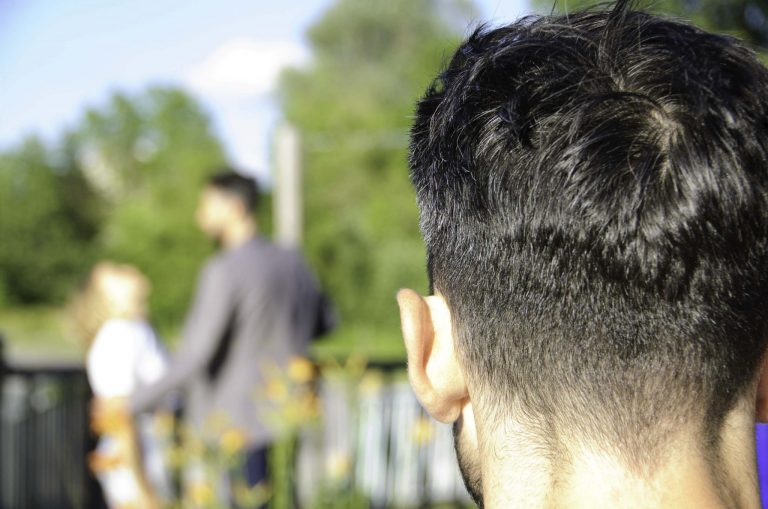I like to think that most of us are caring people and that we want to live in a community that is respectful, accepting and welcoming. A place where people listen to, support and care for one another.
The truth is harm happens in communities, even communities that are caring. This harm could be caused by people’s actions, inaction, language or ignorance, but, whatever the reason, there is something we can all do.
Active Bystander Intervention is intervening when you see harm or the potential for harm. It also involves providing support to people who have been harmed.
You have probably been an active bystander without calling it this. Maybe you have told someone they have toilet paper on their shoe or helped a drunk friend home. Maybe you gave someone a dirty look when they told a sexist joke or made a racist comment.
There are many ways to be an active bystander, which is not to say that it is easy. It requires a lot of courage. Sometimes to keep ourselves safe we cannot intervene, especially if we are from a community that experiences oppression.
We may also think that it does not matter whether we intervene. But interrupting harm in all its forms challenges the ongoing normalization and acceptance of things such as racism, homophobia, sexual violence and ableism in our communities.
Harm is often preventable—and as part of a community we all have a role to play.
Research and community education has identified five strategies as useful Bystander Intervention tactics. They are known as the 5Ds: Direct, Distract, Delegate, Document and Delay. The 5Ds are various ways you can support someone who is being harassed or harmed or made to feel uncomfortable.
We know people are often harmed because of their race, sex, religion, gender, size, orientation, ability or age, and often there are bystanders who see what is happening. As an empowered bystander with skills, you are more likely to intervene appropriately, which will help prevent and end harmful situations.
I provide Active Bystander Intervention training sessions on the University of Waterloo campus, which are three hours long and provide an opportunity to discuss and practice the 5Ds.
I am going to describe them here in the hopes that it is helpful, but with the caveat that you have more to learn, especially if this is your first time hearing about Active Bystander Intervention.
Harm also takes place online, there are many ways to intervene online which will not be discussed here.
When we think of intervening, we often think of directly responding to the harm by naming it or confronting the person causing harm.
However, other Ds can be just as, or sometimes more, effective than Direct. Before you decide to respond directly, assess the situation and ensure you are safe. Direct intervention can be risky. It may escalate the situation and turn the harm towards you. If you feel safe, you could say, “That is racist, homophobic, inappropriate …” or “Why would you say/do that?”
You can also look away, cross your arms, or frown–show your disapproval without saying anything. Remember to be clear, concise and calm. Keep it short and then turn your attention to the person being harmed and check in to see if they are alright.
Distraction is an indirect, sometimes subtle, creative way to intervene. It is often safer than intervening directly and can allow you to use your strengths! The aim is to derail and de-escalate the situation by interrupting it.
This can include: accidentally spilling a drink on purpose; pretending to know the person being harmed (“Sorry I’m late, are you ready to go?”); causing a commotion; or asking for directions.
Delegating is asking for assistance or help from a third party, possibly from someone nearby or in a position of authority. For example, ask a store manager, bouncer or bus driver to intervene; talk to people around you and ask if they would intervene with you–safety, strength and comfort in numbers; check in with the person being harmed, possibly with a distraction, and ask if they would like you to call 911 but remember not everyone feels safe with the intervention of law enforcement and your level of trust with the police may not be everyone’s level of trust.
Documenting is making a record of the incident with video, audio, pictures or notes, or paying close attention. Assess the situation–if no one else is intervening, help if you feel safe doing so. Always ask the person being harmed what they would like to do with videos or pictures. Do not post without their consent; this is not being a helpful bystander and could cause more harm.
Delay can be very effective but sometimes does not get the respect it deserves. Checking in after the incident can prevent someone from blaming themselves or feeling alone and can even reduce trauma. You could say, “I’m sorry that happened to you” or “I saw what happened; totally not your fault.” It is important to remember that sometimes the harm from no one doing or saying anything is worse than the initial harm done.
I would like to sum up by saying that Active Bystander Intervention can make your community a better and safer place, and, if you need another reason, helping others can make YOU feel good as well.
If you would like to learn more about Bystander Intervention, take a free, one-hour, online training at righttobe.org.

